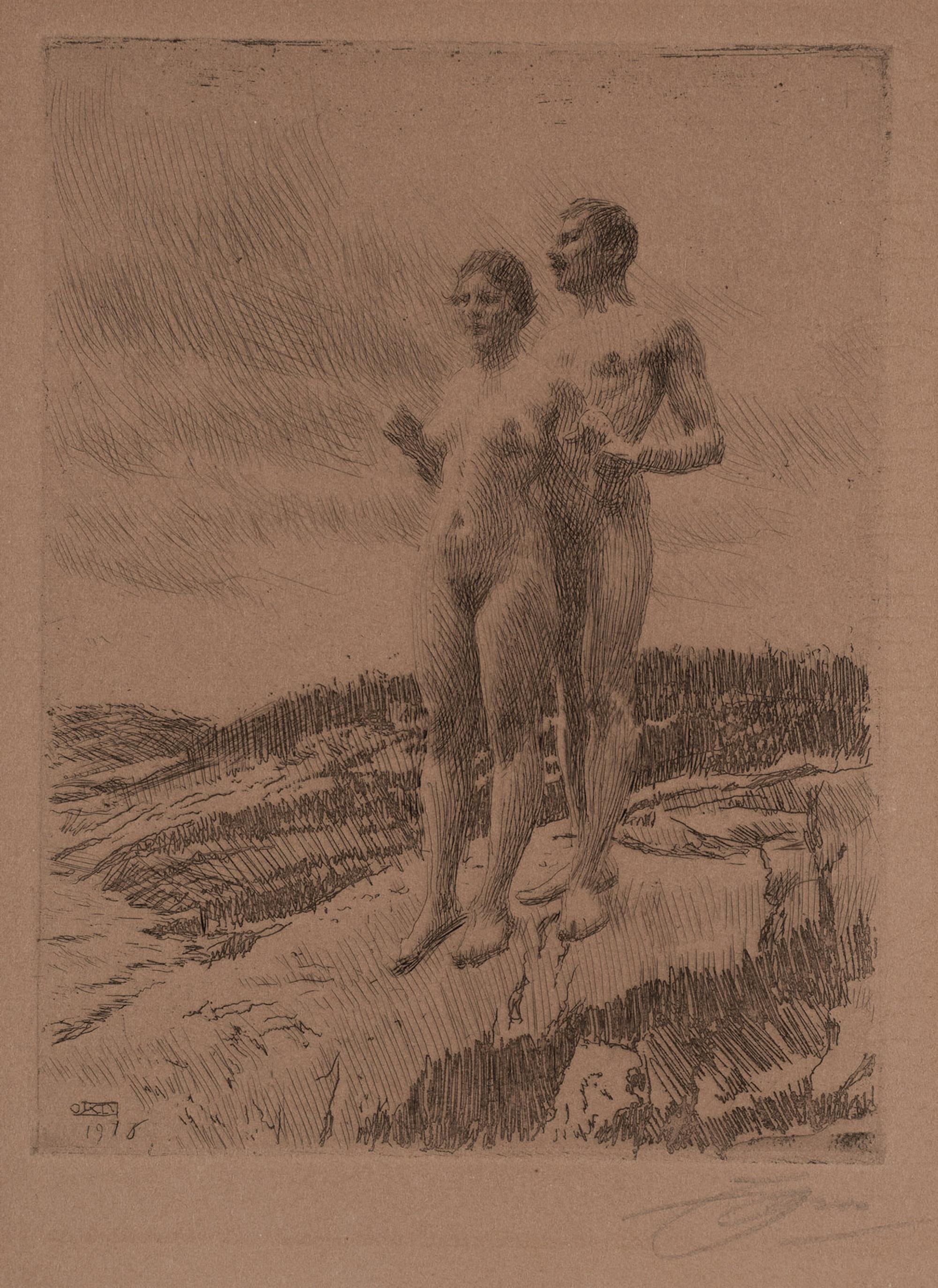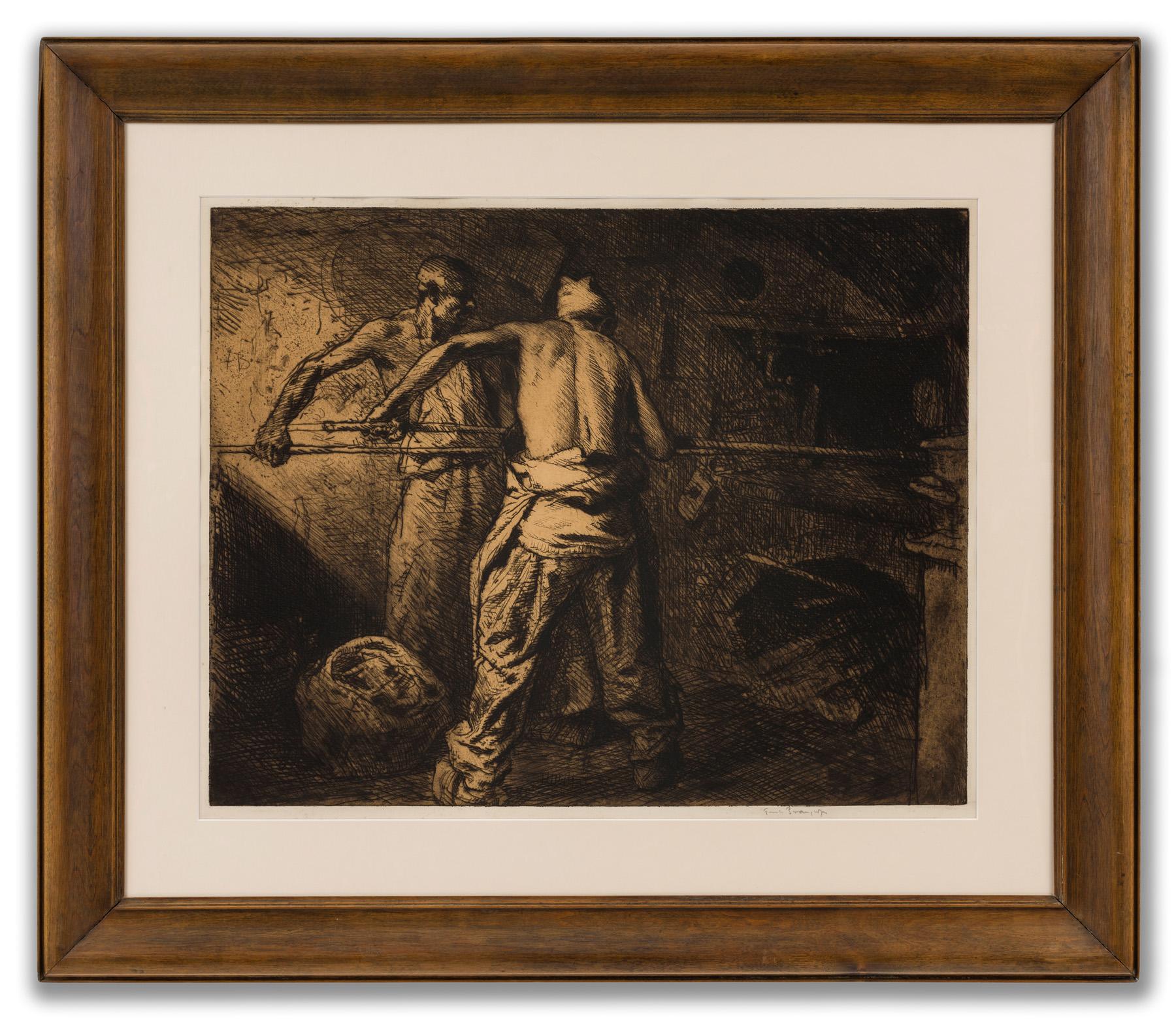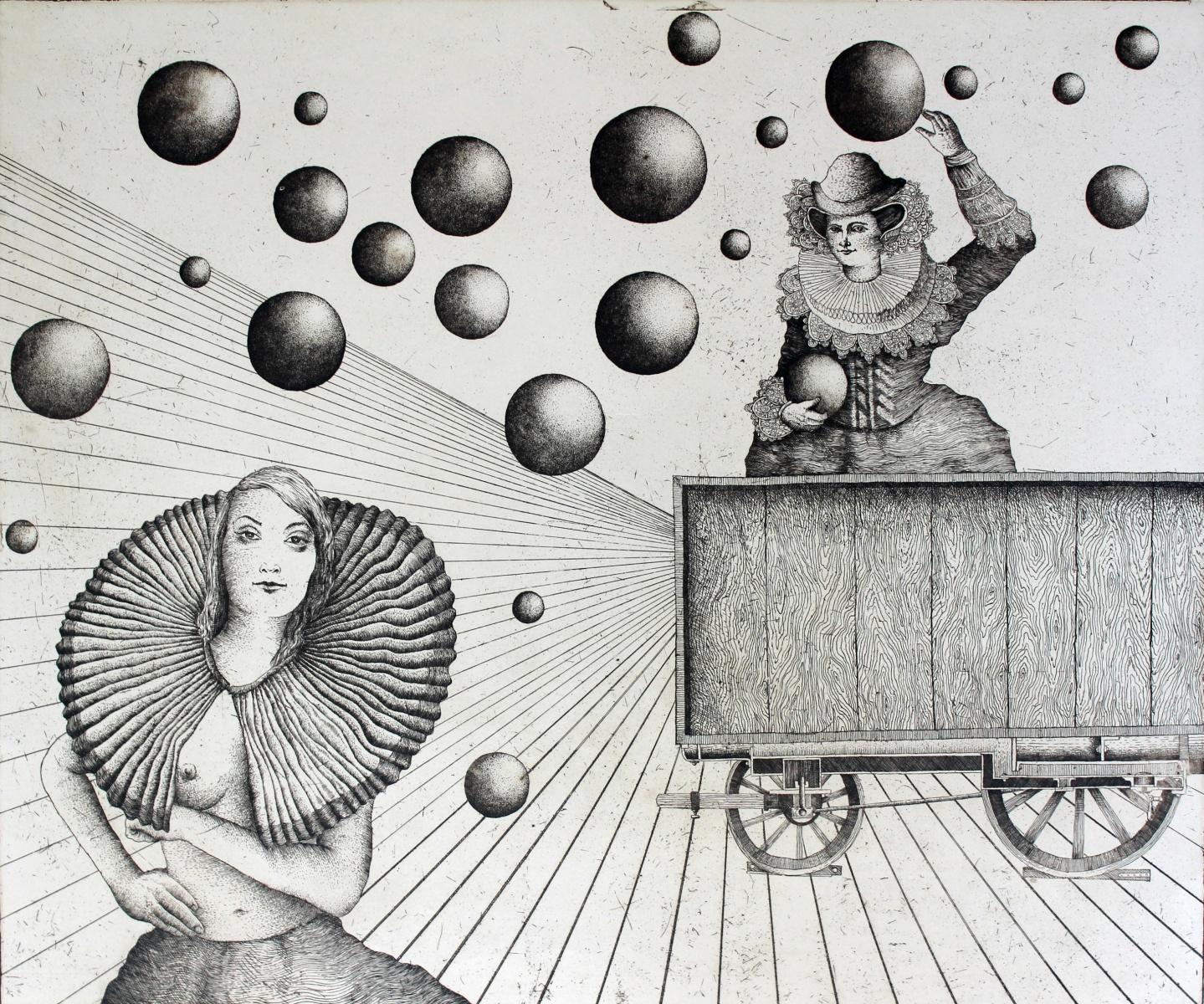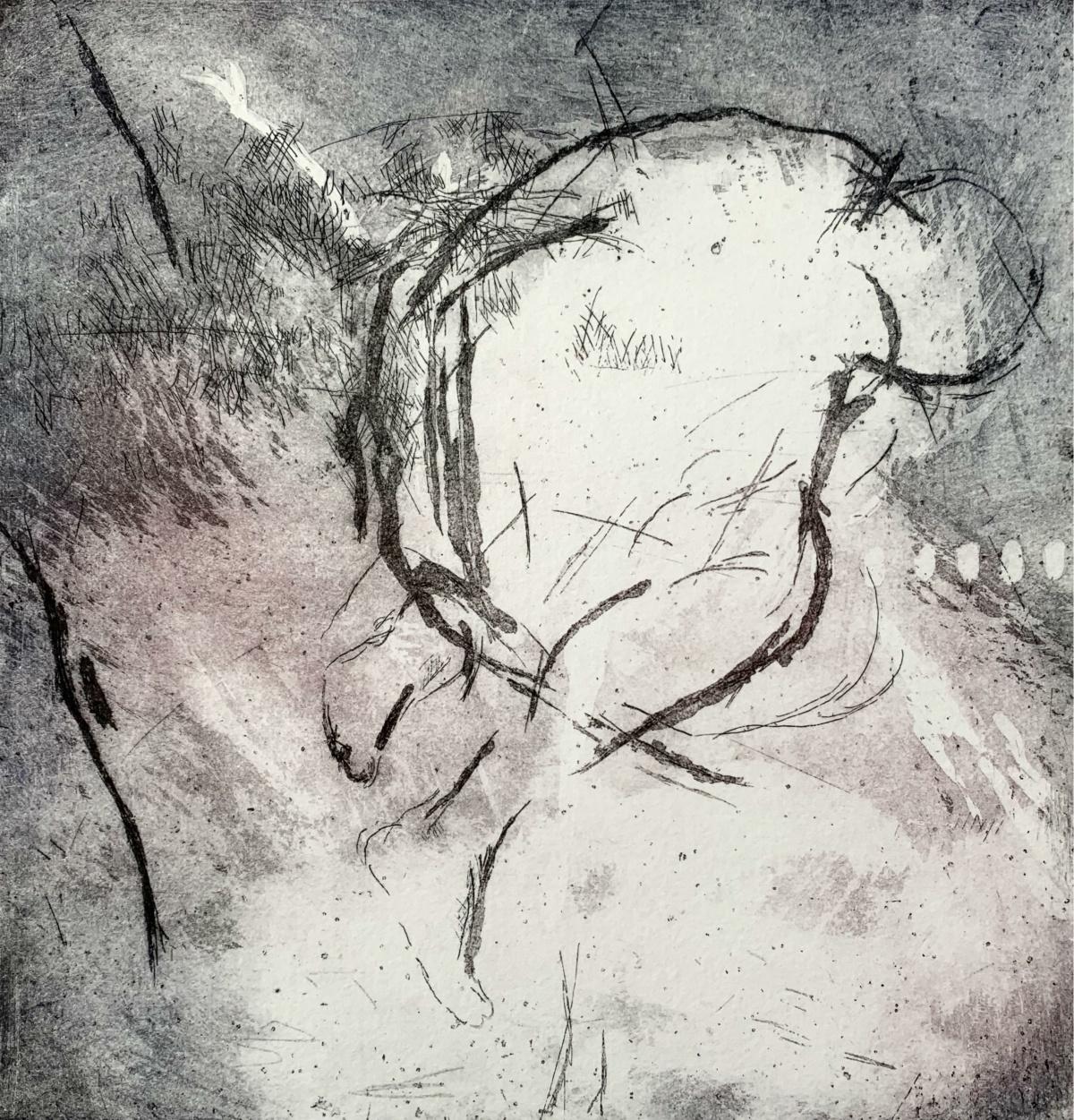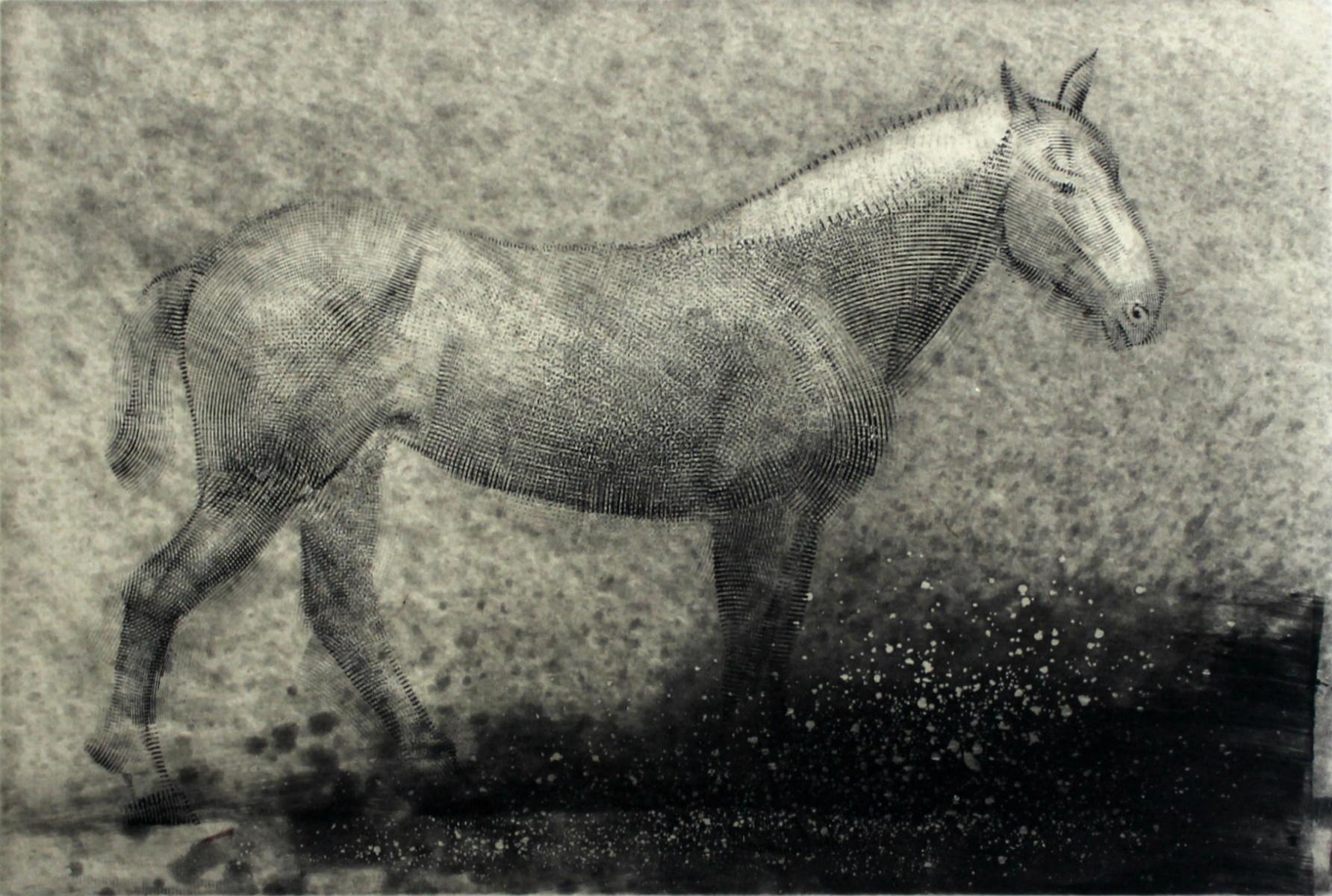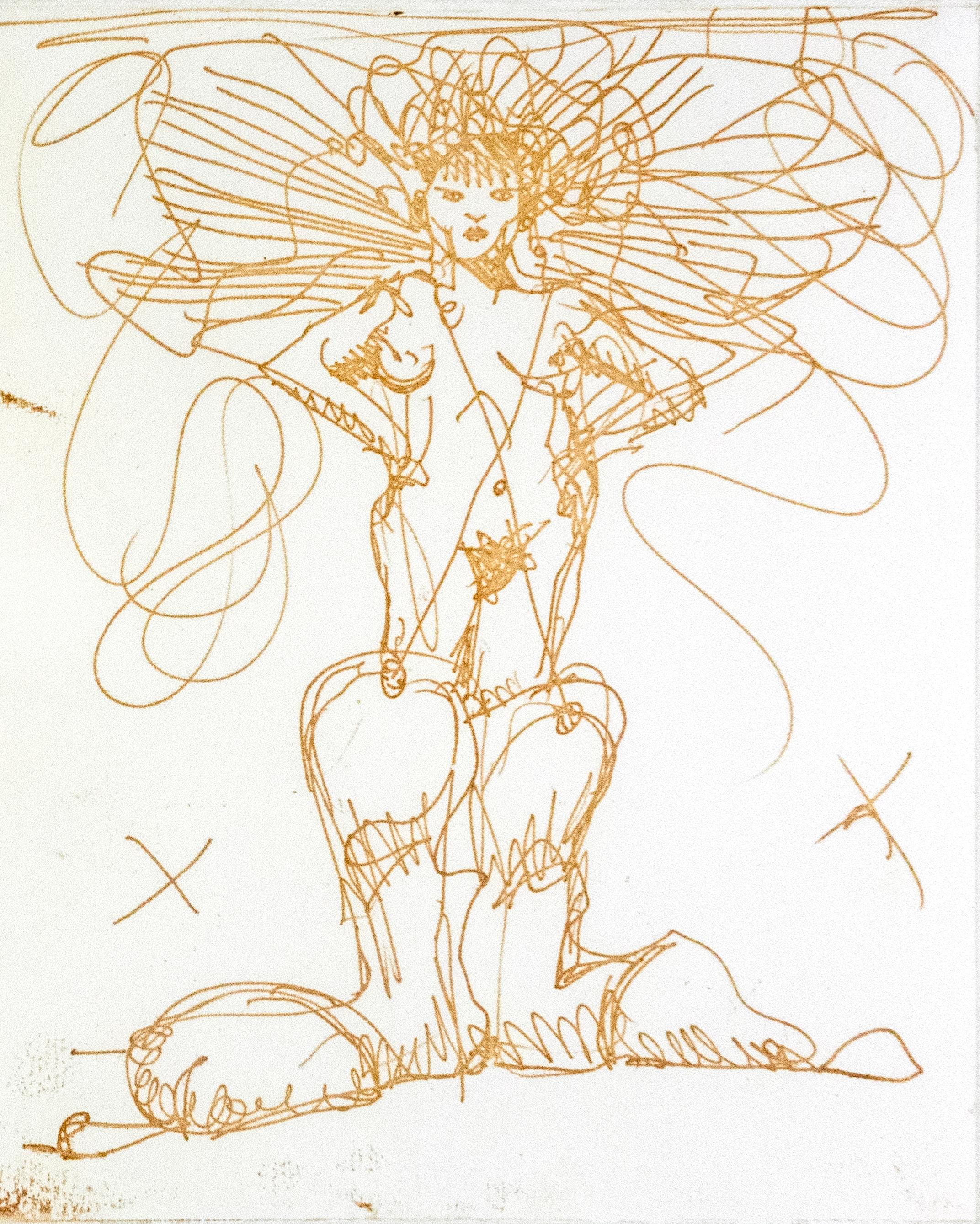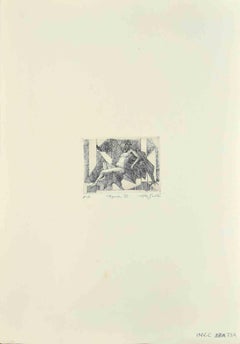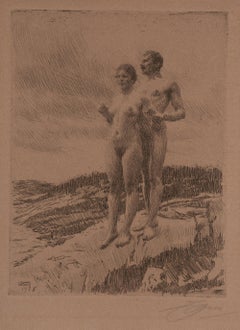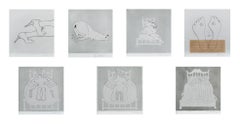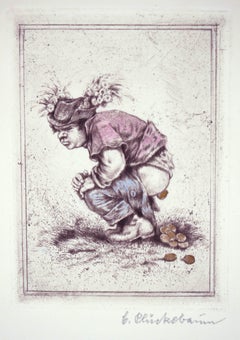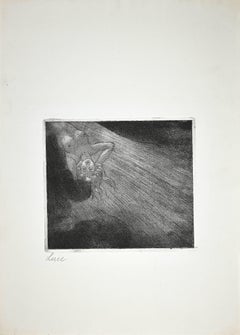
Luce - Original Etching by Luigi Russolo - Early 20th Century
View Similar Items
Want more images or videos?
Request additional images or videos from the seller
1 of 5
Luigi RussoloLuce - Original Etching by Luigi Russolo - Early 20th CenturyEarly 20th Century
Early 20th Century
About the Item
- Creator:Luigi Russolo (1883 - 1947, Italian)
- Creation Year:Early 20th Century
- Dimensions:Height: 19.69 in (50 cm)Width: 14.18 in (36 cm)Depth: 0.08 in (2 mm)
- Medium:
- Movement & Style:
- Period:
- Framing:Framing Options Available
- Condition:Insurance may be requested by customers as additional service, contact us for more information.
- Gallery Location:Roma, IT
- Reference Number:Seller: J-765931stDibs: LU65037823082
About the Seller
4.9
Platinum Seller
These expertly vetted sellers are 1stDibs' most experienced sellers and are rated highest by our customers.
1stDibs seller since 2017
6,721 sales on 1stDibs
Typical response time: 2 hours
More From This SellerView All
- Rest - Original Etching by Leo Guida - 1989By Leo GuidaLocated in Roma, ITRest is an original etching realized by Leo Guida in 1989. Good condition. Mounted on a white cardboard passpartout (50x35) Hand-signed and dateb by the artist. Artist proof. Le...Category
1970s Contemporary Figurative Prints
MaterialsEtching
- Woman With horse - Etching by Enzo Assenza - 1970sLocated in Roma, ITWoman With horse is an original artwork realized by Enzo Assenza. Original print in etching technique. Hand-signed by the artist in pencil on the l...Category
1970s Contemporary Figurative Prints
MaterialsEtching
- Double Face A - Original Etching by Giacomo Porzano - 1972By Giacomo PorzanoLocated in Roma, ITLimited edition of 100 prints, numbered and signed. Excellent condition.Category
1970s Contemporary Figurative Prints
MaterialsEtching
- Couple - Original Etching by Louis Jou - Early 20th CenturyBy Louis JouLocated in Roma, ITCouple is an original etching realized by Louis Jou in the Early 20th Century. Good conditions. Specimen before the lettering. Louis Jou (Gracia, 1882 - Baux, 1968), the twentieth-century etcher and wood engraver, was a prolific illustrator of a large number of books in France, authored by big names like Andre Gide...Category
1920s Modern Nude Prints
MaterialsEtching
- Nude - Original Etching by Pierre Dubreuil - Mid 20th CenturyLocated in Roma, ITNude is an origina etching realized by Pierre Dubreuil in the mid-20th Century. Hand-signed. Numbered. Edition, 83/100. Good conditions.Category
Mid-20th Century Modern Figurative Prints
MaterialsEtching
- Nude - Original Hand-colored Etching by Sergio Barletta - 20th CenturyBy Sergio BarlettaLocated in Roma, ITNude is an original Hand-colored etching artwork, realized by Sergio Barletta. Hand-signed the lower left, Numbered, edition of 1/2 prints. In very good conditions. Included a w...Category
20th Century Figurative Prints
MaterialsEtching
You May Also Like
- The TwoBy Anders ZornLocated in Tallinn, EEAnders Zorn (Utmeland/Dalarne, 1860 - Mora/Sweden, 1920) The Two", 1916 Signed in pencil lower right and monogrammed and dated in the plate. Etching on laid paper. 35,5 x 23 cm; 20,2...Category
1910s Figurative Prints
MaterialsLaid Paper, Etching
Price Upon Request - Portfolio Metamorfosis IBy Louise BourgeoisLocated in Ljubljana, SIPortfolio Metamorfosis I. Original 7 etching, one with collage, 1999. Edition of 25 signed and numbered impressions on Arches paper. The entire portfolio is for sale. Louise Bourgeoi...Category
1990s Post-Modern Figurative Prints
MaterialsMixed Media, Etching
Price Upon Request - The Talisman (so called Dukatenscheisser) - The philosopher's stone -By Carl PlückebaumLocated in Berlin, DECarl Maria Plückebaum (1880 Düsseldorf - 1952 ibid.), Der Talismann (sog. Dukatenscheisser), partly colored etching, 11.5 x 8.5 cm (plate size), 26.5 x 20 cm (sheet size), signed by hand below the image on the right "C. Plückebaum" and inscribed by hand at lower left "Der Talismann". - left and right side of the sheet with browned stripes, otherwise good copy - The philosopher's stone - About the artist Here, Carl Plückebaum gives free rein to his anti-academic impulses and turns the subtle humor of his pictures into crudeness. Following Adrian Ostade's peasants as they go about their needy business, we see a cowardly fellow in a squatting position. His excrement, however, is not the organic remains of digestion, but - like the golden donkey in the Grimm fairy tale - ducats. However, they appear more brown than golden, which is emphasized by the discreet hand-coloring of the picture. The unattractive accumulation is countered by the blossoms decorating the crouching man's hat. Totally absorbed in his action, his activity is evident in the strained expression on his face, giving Plückebaum a whole new verisimilitude to the concept of naturalism. The title "The Talisman" then turns naturalism back to the miraculous, formulating in a humorous way that these legacies are also a "miracle of nature". About the artist Coming from a poor background, Carl Plückebaum, who had a walking disability and was of short stature, initially worked as a church restorer. He also took private drawing lessons. In 1901 he won the first prize of the Düsseldorf Museum of Decorative Arts, which enabled him to finance his studies at the Düsseldorf Academy. There he was a pupil of Eduard von Gebhardt and Peter Janssen the Elder, but began to doubt the academic teaching. In 1906 he took part in a group exhibition at the Städtische Kunsthalle Düsseldorf, which violated the academy's statutes and led to his dismissal. However, the extraordinary success with the public confirmed him as an artist and provided him with the financial means for a study trip to Italy. Enchanted by Florence, he retired to the Franciscan monastery of Fisole, where he worked as a fresco painter. Back in Düsseldorf, he turned increasingly to children's and animal drawings, and in 1907 he was a founding member of the Niederrhein Secessionist Artists' Group. In 1910 he travelled to Italy again, accompanied by his painter friends Walter Ophey and Carl Schmitz-Pleis, visiting Rome and Naples in particular. He then stayed in Munich to study the Old Masters at the Pinakothek. It was in the artistic circles of Schwabing that he met his future wife, the painter Meta Weber. In Düsseldorf, Carl and Meta Plückebaum...Category
Early 20th Century Realist Figurative Prints
MaterialsEtching
$245 Sale Price20% Off - Men in a BakehouseBy Sir Frank BrangwynLocated in London, GBEtching, signed in pencil (lower right), 51cm x 64.5cm (plate size) (81cm x 94cm framed). British painter, printmaker, draughtsman, and designer, the son of a Welsh architect who specialized in church furnishings and who was working in Belgium at the time of the boy's birth. In 1882–4 Brangwyn served an apprenticeship with William Morris, and like his master he was active in a variety of fields. He was an Official War Artist in the First World War, for example, he was one of the finest draughtsmen of the day and a skilful etcher and lithographer, and he made designs for a great range of objects (furniture, textiles, ceramics, glassware, jewellery, and so on); however, he became best known for his murals. His most famous undertaking in this field was a series of large panels on the theme of the British empire, commissioned by the House of Lords...Category
Early 1900s Aesthetic Movement Figurative Prints
MaterialsPaper, Etching
- Woman on a BedBy Lucian FreudLocated in New York, NYLucian Freud Woman on a Bed 1991-92 Etching on Somerset Satin White paper 17 1/2 x 15 1/2 inches; 44 x 39 cm Edition of 30 Initialed and numbered in graphite (lower recto) Frame available upon request Published by Matthew Marks Gallery...Category
1990s Contemporary Figurative Prints
MaterialsEtching
- The potential burden - XXI century, Etching print, Figurative, SurrealistBy Andrzej MazurLocated in Warsaw, PLLimited edition. ANDRZEJ MAZUR was born in Słupsk. He studied at the Academy of Fine Arts in Cracow. He received his diploma in 1985. Illustrator, painter, graphic artist, jewelery d...Category
Early 2000s Other Art Style Figurative Prints
MaterialsPaper, Etching
